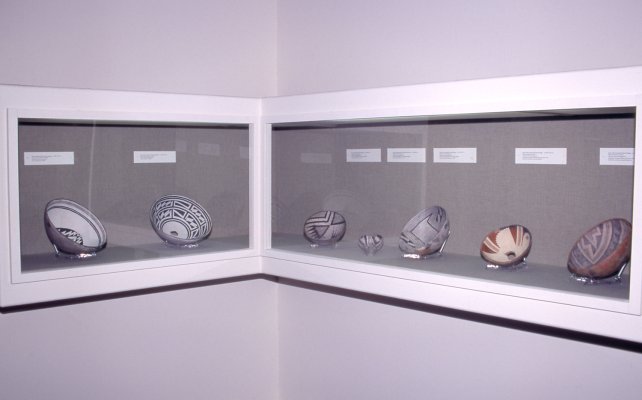The Mimbres Bowl: Painted Funerary Ware of the Ancient Southwest
Friday, November 25, 1994–Saturday, December 31, 1994

Installation view of The Mimbres Bowl: Painted Funerary Ware of the Ancient Southwest. Photograph by Tom Loonan.
1905 Building
Centered around a private collection of painted bowls from archeological sites in southwestern New Mexico excavated by the late Richard “Red” Ellison, and including bowls from the museum’s collection and from other area public collections, this exhibition brought together nearly 30 examples from the ceramic painting category “Classic Mimbres Black-on-White.” The Mimbres people, named after the Mimbres River valley where they lived, are credited with the highest development of ceramic painting in the ancient Southwest. Dating from ca. 1000 to 1150 C.E., most of these bowls on view were made specifically for use in the burial rituals of this pre-Columbian culture.
There are two general types of decorated Mimbres bowls — figurative and geometric. The figurative bowls depict animals, insects, birds, and people, as well as narrative scenes that often defy interpretation. Equally inventive and graphically diverse, the geometrically patterned bowls are formally indebted to Mimbres basketry and textile designs.
Funerary bowls belong to both groups. These were ritually pierced with a kill hole and placed over the face or head of the deceased for burial. Some show signs of having been used in food service and others not, while still other food bowls without kill holes were included as grave goods.
Little is known about the significance of the bowl decorations and their meaning within the funeral ceremony. Regrettably, the undocumented provenance of many bowls, not to mention the massive devastation of Mimbres sites by bulldozing pot-hunters, have all but assured that mystery will continue to surround these extraordinary objects.
This exhibition was organized by Curator Marc Mayer.